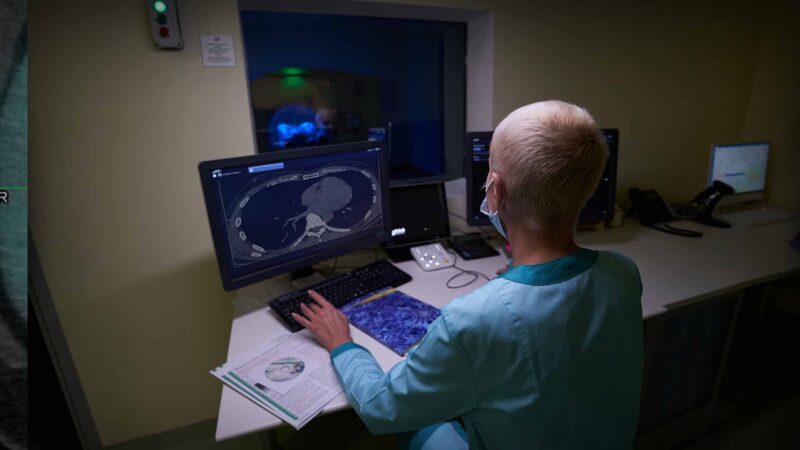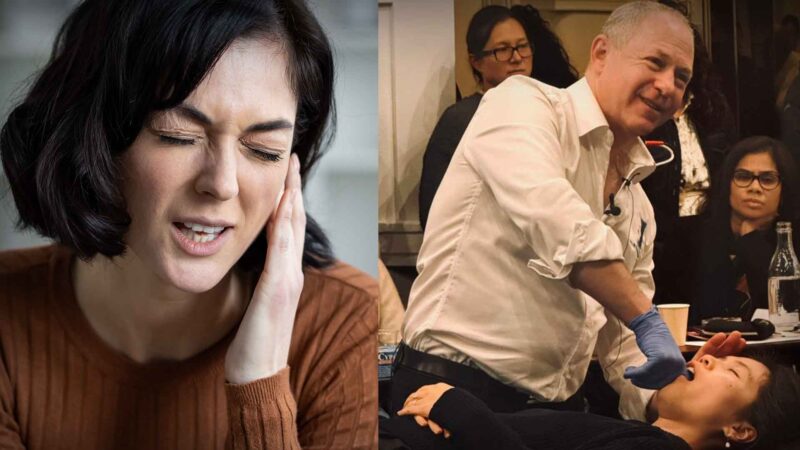LASERS IN DENTAL TREATMENT WITHOUT NEEDLES AND DRILLS
Dr Omar Zuaiter
Co-Founder & Chief Executive Officer, Dentroid
Alaa Habeb
Co-Founder & Chief Technology Officer, Dentroid
Professor Laurence Walsh
Chief Dental Officer, Dentroid &
Emeritus Professor, School of Dentistry, University of Queensland &
Adjunct Professor, Griffith University, Queensland
Professor Heiko Spallek
Member Scientific Advisory Committee, Dentroid &
Head of School and Dean of The University of Sydney School of Dentistry
BENCH SIDE STORY CASE STUDY
Filmed in Brisbane, Canberra & Sydney | December 2024
In 2017, Dr. Omar Zuaiter and Alaa Habeb launched Dentroid, a dental technology startup with a mission to make dentistry a kinder and friendlier experience for patients and dentists using photonics (using laser technology) and robotics, as alternatives to needles, drills and sprays. The vision for the startup is to have dentistry adopt laser technology, addressing the root causes of dental pain & anxiety, and create a pain-free dental experience.
Dentroid is pioneering the adoption of femtosecond lasers in dentistry which will be their first surgical application outside eye surgery. Unlike conventional dental lasers or rotary instruments, femtosecond lasers have a very unique ability to precisely cut through the most resistant materials without requiring cooling or causing thermal damage. This “cold cutting” creates convenience for the patient, clearer vision for the practitioner and a cleaner environment in the office without microbes laden droplets.
A key distinctive feature of femtosecond laser in “cold cutting” is that it leaves the underlying tissues unharmed with the aim of supporting faster healing with less postoperative complications.
Dentroid envisages femtosecond lasers, combined with their patented miniaturised robotic technology will change the way dental tissues and restorative materials are prepared, processed and bonded not only in clinics but also in dental labs.
To support this mission, Dentroid has assembled a multidisciplinary team of world-renowned experts in dentistry and medicine, engineering, robotics, physics, medical sciences and AI informatics together with commercialisation and growth minds who helped scale startups grow to much larger organisations.
In this Bench Side Story Case Study release, we spoke with some of the key people involved in Dentroid mission and commercialisation journey.
FORWARD LOOKING STATEMENTS
This case study may contain projections and forward-looking statements that involve risks and uncertainties, including statements regarding the potential benefits and success of the drug or therapeutic. Actual results could differ materially from those anticipated in these forward-looking statements due to various factors, including but not limited to the risks and uncertainties associated with drug or device development and regulatory approval processes.
Viewers are advised content is for awareness and entertainment purposes only.
You Might also like
-
Patient-paramedic trust can help free up emergency departments
Dr. Robbie King is a Senior Advanced Care Paramedic with the Queensland Ambulance Service and a community paramedic. He is also a lecturer at the Australian Catholic University in Brisbane. After studying paramedicine and working as a student paramedic since 2009, he recognised that most patients attended by ambulance services did not require emergency interventions.
-
25 years of non-indexation of nuclear medicine impeding access & affordability
The President of the Australasian Association of Nuclear Medicine Specialists (AANMS), Associate Professor Sze Ting Lee spoke with Australian Health Journal about the following:
Usual levels of nuclear medicine services in Australia each year
Current levels of nuclear medicine services in Australia
How changing demographics in people moving to regional areas has impacted access to nuclear medicine services
The nuclear medicine workforce including trainees
The key recommendations from the pre-budget submissionIn the lead up to the Australian Federal Budget in May 2023, Australian Health Journal reached out to peak health industry bodies to hear about their priorities, either noted in pre-budget submissions lodged with Federal Government in January 2023 or in recent forums such as the Strengthening Medicare Taskforce.
-
Physiotherapy approach to jaw & facial pain ties with dental expertise
Darron Goralsky is the Founder, CEO and Clinical Director of Melbourne TMJ & Facial Pain Centre, one of Australia’s leading multidisciplinary clinics dedicated to the assessment and management of temporomandibular disorders (TMD) and craniofacial pain.



